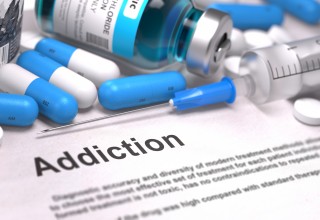Suboxone: What is It and What Does It Do?

Los Angeles, California, August 2, 2017 (Newswire.com) - Suboxone is a relatively new formula containing an opioid painkiller (Buprenorphine) and a drug that reverses the effects of opioid drugs (Naloxone). Naloxone is included to make it harder to get high from opioids while taking the drug.
However, like heroin and other opioids, Suboxone has its liabilities. Here are some of the effects one can experience:
- Respiratory suppression
- Sleepiness
- Dizziness
- Problems with coordination
- Low blood pressure
- Blurred vision
- Constipation
- Headache
- Intoxication
- Impaired ability to drive a car or operate machinery
- Slow reflexes
- Reduction of immunity to illness or infection
- Sleeping problems
- Cold or flu symptoms
- Nausea
- Emotional highs and lows
One important factor to consider is that Suboxone does not eliminate a person’s cravings to get high. And taking heroin or painkillers on top of Suboxone can result in respiratory distress, coma or even death.
A Maryland recovery center reports that while on Suboxone:
“Often [addicts] replace opiate use with increased problem drinking or the use of other illicit drugs like cocaine or benzodiazepines like Xanax. Many still suffer from underlying emotional or traumatic issues that are never addressed. And when these people finally realize that their ‘solution’ of Suboxone has become a problem and actually want to get off the crutch, they find it harder to do than the opiate they were originally trying to get off of in the first place.”
Persons wishing to stop taking Suboxone go through withdrawal that is longer and more intense than withdrawal from heroin. For heroin, withdrawal peaks after some 72 intensely uncomfortable hours and lasts four to ten days. When withdrawing from Suboxone, the physical symptoms are most acute for 72 hours. Bodily aches and pains, insomnia and mood swings continue for a week. Depression can last two weeks to a month and cravings typically last a month.
Every family or addicted individual facing a decision about rehab and recovery would be wise to educate themselves on all the effects and outcomes of Suboxone treatment for addiction. As a short-term bridge, it may help some people ease out of addiction, as long as they quickly receive the other help they need to recover fully from the harmful physical, mental and spiritual effects of their past drug abuse.
For nearly 50 years, the Narconon drug rehabilitation program has saved the lives of countless individuals who were thought lost to substance abuse forever. The Narconon mission is to provide an effective path for drug abuse rehabilitation and to assist society in reversing the scourge of drug abuse worldwide.
For more information on the Narconon program and our international network of centers across 50 nations, call 1 (877) 445-7113.
Source: Narconon.org


